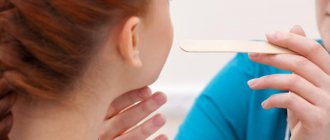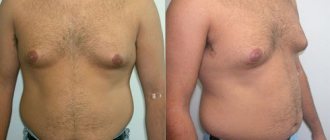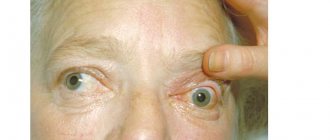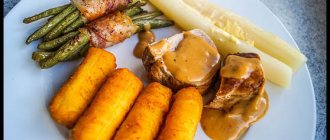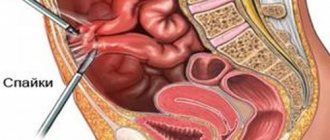A nervous tic is a rapid, repetitive, irregular movement caused by the contraction of certain muscles. Most often, the muscles of the face and arms contract, but absolutely any muscle group can be involved. A nervous tic occurs against a person’s will, can imitate a fragment of normal purposeful movements, but in itself is an absolutely useless action. Sometimes, with an effort of will, you can suppress the occurrence of a tic, but not for long. Tics appear only during wakefulness. They do not have any pattern, they are always fast, abrupt, with different repetition intervals. Nervous tics are pathological conditions, but they do not always require treatment. You will learn about the reasons that lead to the appearance of tics, what they are like and how to deal with them in this article.
Nervous tics are the result of increased activity of the so-called extrapyramidal system of the brain. This system is responsible for reproducing many of the automated movements of our body, that is, it works relatively independently without the participation of the cerebral cortex. When, for some reason, excitement circulates in the extrapyramidal system, this can be expressed in the appearance of nervous tics (although this is far from the only symptom of increased activity of the extrapyramidal system).
Features of the pathological process
A nervous tic is a condition in which sudden, repeated contractions of a particular muscle group are observed. A person cannot influence this process in any way. In most cases, the muscles of the arms and face begin to contract spontaneously. Although absolutely any muscle area can be involved in the process. A nervous tic itself does not harm a person. However, this condition may indicate serious disorders in the body. Therefore, for frequently recurring attacks, it is recommended to make an appointment with a doctor.
In some cases, an effort of will can suppress an attack of a nervous tic. However, after a while, the muscles begin to involuntarily contract again.
Everyone has encountered a nervous tic in one form or another.
Nervous tics have no pattern. Both women and men can face it equally. Often, girls during pregnancy begin to complain about the increased manifestation of the pathological process. In this case, a nervous tic may be associated with hormonal changes and physical fatigue.
Features in children
According to statistics, every tenth child experiences such a phenomenon as a nervous tic. The risk group includes children from two to eighteen years of age. Children aged seven to eleven years require special attention. Because it is during this period that their psyche is highly susceptible to stress.
And if you do not take care to exclude factors that can provoke the development of a tic, the location of the symptom may change. And the process itself will become pathological. In other words, the child will develop persistent and uncontrollable jerking of the limbs.
Classification of nervous tics
According to the nature of the symptoms, nervous tics are most often motor. They manifest themselves in the form of voluntary muscle contractions. The following types of pathological process are much less common:
- vocal. The body makes sounds;
- sensory. Unpleasant sensations appear in a certain area of the body, prompting the desire to change position, stand up, and walk around.
In addition, experts divide all nervous tics into simple and complex. In the first case, only one muscle group is involved. Simple examples include the following:
- blinking;
- twitching of the wings of the nose;
- throwing the legs forward;
- trembling of the pelvic or buttock muscles, etc.
With complex nervous tics, several muscle groups sequentially contract at once. This could be jumping, rubbing certain places, sniffing.
Vocal tics can also vary. Most often, the patient hisses, coughs, and whistles involuntarily. In a more complex case, the patient may repeat someone else's words.
Most often you have to deal with local tics when a certain area of the body is affected. In some cases, other muscle groups are also involved in the pathological process.
Nervous eye tic in children: causes
There are several reasons that cause nervous eye tics in children:
- insufficient moisture of the cornea of the eye caused by frequent and prolonged viewing of TV, tablet, PC, etc.
- any traumatic brain injury
- nervous overload of the baby's body
- myopia
- injury directly to the eye
- genetic predisposition
- long-term stressful situation (adjustment to kindergarten or school, change of place of residence, family troubles, etc.)
- taking serious medications
- a consequence of previous diseases (ARVI, conjunctivitis, worms, etc.)
IMPORTANT: Regardless of the cause, self-medication for this pathology is excluded.
Nervous eye tic in a child
Causes of tic development
All nervous tics are a disruption of the extrapyramidal system of the brain. It is she who is responsible for performing all automated processes in the body.
Nervous tics can be primary or secondary. In the first case, it is impossible to trace the connection with any disease. It is very difficult to determine what exactly could provoke the appearance of a nervous tic. In this case, the pathological process is called idiopathic.
Overwork can trigger the appearance of tics. Often the first symptoms occur in adolescents during puberty due to hormonal changes in the body. A genetic predisposition to nervous tics has also been proven.
Emotional people are more likely to develop tics
People who eat poorly are prone to developing tics. A lack of calcium and other minerals can lead to the development of unpleasant symptoms.
Cholerics are more likely to experience nervous tics. Such people are distinguished by their temper and emotionality. Their nervous system is more susceptible to the influence of external factors.
If a tic has a clear cause-and-effect relationship, it is called secondary. The following negative factors can provoke pathology:
- head injuries;
- cerebrovascular accidents;
- taking certain medications;
- mental illness;
- carbon monoxide poisoning;
- neurological disorders;
- parasites in the body;
- oncological diseases;
- drug addict;
- alcoholism.
A striking difference between secondary tics is that they are always accompanied by other symptoms (headaches, attention disorders, sleep disturbances, etc.).
Possible complications of tics
Eye twitching in itself is not dangerous to health, but only if the symptom occurs rarely. But with the regular occurrence of unpleasant symptoms, the risk increases in the form of constant contraction of muscle groups.
| However, the main danger of tic is that it can spread to other parts of the body. At the same time, sometimes doctors diagnose the development of a serious disorder called Tourette syndrome. |
Return to contents
Symptoms
A nervous tic is always associated with involuntary contraction of certain muscles. Attempts to suppress an attack are rarely successful. In most cases, the tic only gets worse. Manifestations of the pathological process depend on the location. On the face it can be:
- eye twitching;
- blinking;
- involuntary raising of eyebrows;
- mouth opening;
- wrinkling of the nose;
- tongue clicking;
- cut with teeth;
- chin movement;
- ear movement;
- contraction of the cheeks (spontaneous smile).
If a nervous tic occurs in the area of the shoulders or neck, it manifests itself in the form of rotation or twitching of the head, stretching of the neck, nodding. The patient can also spontaneously bend and straighten his arms (or legs), and snap his fingers.
Grimace is one of the manifestations of a nervous tic
Tics appear less frequently in the torso area. The patient may stick out his chest or stomach, contract the muscles of his buttocks. Vocal tics can manifest themselves in the form of coughing, grunting, and whistling.
Symptoms and first signs
A tic is characterized by uncontrollable contraction of muscles in a specific area of the body (motor) or involuntary vocal manifestations (vocal). The muscle contractions resemble normal body movements, but are repeated at an unnatural frequency and cannot be stopped consciously. The first manifestation of the disease always occurs at the time of overwork, weakening or injury of the body.
Teak is always located in a certain zone; cases of spread or increase in the affected area are still not known. The most common nervous tic is on the face; the following muscles are affected by the disease:
- upper and lower eyelids, areas around the eyes;
- eyebrows and forehead;
- nasal muscles;
- cheekbones;
- lips.
Possible damage to the cervical area, which is characterized by involuntary nodding and turning of the head. From the outside it seems as if the head is twitching. In third place in popularity are the limbs, especially the movable areas of the arms, hands, and fingers. Less commonly – shoulders, hips. For example, there may be a nervous tic in the right thumb or a tremor in the leg.
Diagnostics
Primary nervous tics usually do not require special therapy. The patient should get enough sleep, have a good rest, and the unpleasant symptoms will go away. But patients with secondary tics cannot do without specialized help. It is imperative to seek help from a neurologist. In his work, the doctor uses the following diagnostic methods:
- Patient interview. It is important to find out when the nervous tic first appeared, what preceded the unpleasant symptoms.
- General blood analysis. The presence of an inflammatory process in the body will be indicated by an increase in the level of leukocytes and ESR.
- Ionogram. The technique allows you to determine the electrolyte composition of the patient’s blood. Particular attention is paid to the concentration of magnesium and potassium. The lack of these components most often leads to the appearance of a nervous tic.
- Fecal analysis to detect helminths.
- Brain MRI. The study allows us to identify cerebral vascular lesions and tumors. The technique also helps to determine brain changes in mental disorders.
A qualified neurologist can quickly make a diagnosis
Differential diagnosis of secondary nervous tics can be carried out with the participation of a traumatologist, psychotherapist, infectious disease specialist, oncologist, narcologist and other specialized specialists.
How to get rid of nervous eye tics using folk remedies?
There are several very simple ways to get rid of nervous eye tics on your own:
- A regular cold compress for 30 minutes, aimed at relieving tension and constricting blood vessels
- A honey compress gives the same effect: dissolve a tablespoon of honey in a glass of water and apply cotton swabs soaked in the resulting solution to your eyes for 25 minutes
- Breathe with essential oils of cinnamon, lavender or geranium. You can also use them when taking a bath
- Monitor your diet: exclude fatty, fried foods, alcohol and coffee, which will help keep your liver healthy, which is one of the causes of eye health.
- Use various herbal decoctions aimed at relieving nervous tension
Herbal decoctions relieve tension from nervous tics
Treatment of nervous tics
Only an integrated approach will allow you to get rid of unpleasant symptoms. If during the primary tic it is enough to rest well and improve nutrition, then with the secondary form of the pathology one cannot do without special drug therapy. Your doctor may prescribe medications from the following groups:
- Nootropics. These are medications that activate metabolic processes in nerve cells and improve brain function. For nervous tics, the drugs Phenibut, Pantocalcin, Cortexin can be prescribed.
- Tranquilizers. Drugs from this category calm the nervous system, normalize sleep, and reduce attacks of nervous tics. Afobazol, Gidazepam, Phenazepam, Atarax tablets show good results.
- Sedatives. Such sedatives as Persen, Novo-Passit, Notta show good results.
Multivitamin complexes are required to restore the activity of the nervous system and normalize the functioning of the immune system. Good reviews can be heard about the products Magne B6, Pentovit, etc. Additionally, therapy is carried out for the underlying disease that caused the appearance of a nervous tic.
A couple of months ago I discovered that there was a throbbing vein under my eye.
But I didn’t pay enough attention to it. But when my work colleagues said after 2 weeks that my “eye was twitching,” I decided to go to the doctor. After reviewing a bunch of reviews, I settled on PENTOVITE. It contains all group B plus vitamin PP and folic acid. I bought 2 packs at once. After 2 weeks, my nervous tic disappeared without a trace. Risha82 https://irecommend.ru/content/nervnyi-tik-proshchai
Medicines for nervous tics - photo gallery
Novo-Passit will quickly calm the nervous system
Phenibut is an effective nootropic drug
Phenazepam is an effective tranquilizer
Magne B6 normalizes magnesium levels in the body
Physiotherapy
Physical methods of influence are used for many diseases. For secondary nervous tics, electrophoresis is widely used. Thanks to the influence of electric current, medications are introduced into the patient’s body to normalize the functioning of the nervous system.
Therapeutic massage shows good results. Just a few procedures can reduce unpleasant symptoms. Aromatherapy will help reduce the excitability of the nervous system. As a rule, several methods are used at once. In the massage room, classical music plays and an aroma lamp works.
Massage will help normalize the functioning of the nervous system
For patients with nervous tics, sanatorium-resort treatment is indicated. A summer holiday by the sea will help get rid of unpleasant symptoms.
Acupuncture
This non-traditional physiotherapeutic treatment method in some cases brings excellent results. By influencing biologically active points, many neurological diseases can be cured, including removing nervous tics. However, it is recommended to sign up for the procedure only with the consent of the attending physician.
Acupuncture twice (from a good specialist) helped me.
I swear)) Although I went with gastrointestinal problems 20 times in total. Chick https://www.woman.ru/health/medley7/thread/4013405/
Homeopathy
The method of therapy based on the principle of “like to treat like” is used for many diseases. Homeopathic medicines are also widely used for nervous tics. You can hear a lot of good reviews about Belladonna. The medicine is used for many diseases of the nervous system. However, the medication can also lead to the development of side effects. Therefore, it must be taken strictly as prescribed by a doctor.
Hemlock is another drug that is used for nervous tics. The medicine is indicated for many pathological processes of the brain. It is also prescribed for meningitis, cerebrovascular accidents, and convulsive syndromes.
The following drugs also show good results:
- Sepia;
- Zincum;
- Phosphorus;
- Causticum, etc.
When is there a need for surgical treatment?
Surgery may be necessary when the cause of a nervous tic is a brain tumor, and conservative therapy does not show good results. This type of surgery is complex and requires long-term rehabilitation. In case of malignant processes, additional chemotherapy may be performed.
Surgery is necessary if the nervous tic is caused by a brain tumor
Surgery is usually performed under general anesthesia. If the tumor is located in close proximity to the speech center, the patient may be briefly taken out of anesthesia during the operation. This is done so that surgeons can determine how much of the tumor can be removed without affecting brain function. The patient reads and names objects. Then the patient is put under anesthesia again. The entire intervention can last 2–3 hours.
A little about nutrition
There is no need for a strict diet for nervous tics. However, it is worth reviewing your diet, giving up fast food, sweet carbonated drinks, alcohol and coffee . You should eat foods high in magnesium and calcium every day. These include:
- dairy products;
- porridge;
- legumes;
- fresh herbs (onion, parsley, dill, spinach);
- bitter chocolate;
- fresh vegetables and fruits.
Proper nutrition is the key to successful treatment for nervous tics
You can't give up protein foods. The diet must include eggs, fish, and lean meats.
Folk remedies for nervous tics
Traditional medicine can show good results. But any methods should be discussed with your doctor.
Medicinal tinctures
Alcohol tinctures of motherwort or valerian perfectly calm the nervous system. 10 drops of each product should be added to a glass of boiled water and drunk before bed. Therapy should be continued until symptoms are completely eliminated.
10 drops of valerian, 10 drops of motherwort, 10 drops of hawthorn, dilute with a small amount of water and drink at NIGHT so as not to be a brake.
A muscle in my leg was twitching due to nervousness, and it went away after a few days. Fidget https://www.woman.ru/health/medley7/thread/4013405/
Essential oils
Baths with essential oils of lemon balm and tea tree perfectly calm the nervous system and eliminate nervous tics. It is enough to add 5 drops of each product. The procedure time is 15 minutes. It is recommended to take relaxing baths daily.
Herbal infusions
Plants such as chamomile, lemon balm, heather, and St. John's wort have excellent sedative properties. Dry raw materials can be purchased at almost any pharmacy. Pour boiling water over a teaspoon of the selected plant, wait until it cools and drink. You can add a little honey or a teaspoon of sugar to this tea.
Honey and mumiyo
The following recipe will help calm the nervous system. One tablet of mumiyo must be ground to a powder and mixed with a teaspoon of honey. You should not swallow the medicine you receive right away. It should remain in the oral cavity for as long as possible. The procedure should be carried out twice a day for a week.
Folk remedies for nervous tics - photo gallery
Tea tree essential oil is used for medicinal baths
Chamomile tea - an aid for nervous tics
Motherwort tincture will help with neurological disorders
Mumiyo with honey is an excellent sedative
How to treat nervous tics with pills and medications?
Nervous tics can be treated in various ways. It all depends on the cause of the disease.
Primary nervous tics in children in most cases do not require therapeutic measures, since the symptoms go away on their own, but you can help the child cope with the disease faster.
- Children over three years old are recommended to be given a few drops of valerian diluted with water up to 4 times a day.
- You can also use motherwort tincture, which has the same properties, but is considered more effective.
- It is acceptable to use tranquilizers such as Diazepam or Phenazepam.
- "Diazepam" is prescribed to children from 1 to 3 years old, 1 mg twice a day. At the age of 3 to 7 years, the dosage is increased to 2 mg 3 times a day
- Children over 7 years old can be given up to 5 mg 3 times a day. The dosage of Phenazepam is prescribed in each case individually by the attending physician.
- If the symptoms are severe, it is possible to use psychotropic drugs: Haloperidol or Pimozide, the dosage of which is selected directly by the doctor
- The same psychotropic drugs are used to treat hereditary nervous tics
- Experts also advise using Cyclodol in parallel with Haloperidol.
Diazepam - a drug for the treatment of nervous tics in children
Secondary nervous tics can be treated with the same drugs. However, the main goal of therapy is to eliminate the root cause of such symptoms:
- brain infections require complex inpatient therapy
- tumors, if operable, are removed surgically
- cerebral circulatory disorders are treated with appropriate medications
- mental illness cannot be cured without the use of psychotropic drugs
Treatment prognosis and prevention
Primary nervous tics are easily eliminated. All you have to do is change your lifestyle, get rid of bad habits, and get a good rest. Secondary tic requires careful treatment. How quickly unpleasant symptoms can be eliminated depends on what caused the pathology. In some cases, it is not possible to completely cure a nervous tic.
If you do not seek help from a specialist in a timely manner, the neurological disease will progress. Muscle contractions will be repeated more often. A nervous tic will cause psychological complexes. In addition, attacks of hiccups, sore throat, and shouting of obscene words may appear.
Even if you managed to get rid of a nervous tic, there is no guarantee that you will not have to face the pathology again in the future. Patients with a genetic predisposition to tics should pay special attention to their condition. The following recommendations must be followed:
- avoid stressful situations;
- have a good rest;
- sleep at least 8 hours a day;
- Healthy food;
- spend time outdoors;
- promptly treat diseases of the nervous system.
Prevention
To prevent a relapse after recovery, follow these rules:
- Avoid stress, overwork, and nervous tension. Give up grueling work.
- Treat central nervous system diseases in a timely manner.
- Engage in methods of developing self-control. Meditation and yoga will do.
- Spend at least an hour a day in the fresh air.
- Lead a healthy lifestyle. Don't take drugs, stop smoking and drinking alcohol.
- Balance your diet. Do not drink a lot of tea, coffee and drinks that have a stimulating effect on the nervous system.
- Follow a daily routine. Get a good night's sleep.
Taking calming infusions
Herbal medicine can serve as both a primary and an auxiliary treatment for nervous tics.
The state of the nervous system is beneficially affected by:
- valerian;
- Linden;
- mint;
- Melissa;
- chamomile;
- three-leaf watch;
- motherwort.
All of them are practically non-toxic and approved for use in children. In the event that a child suffers from a nervous tic, a significant role is played by the fact that the taste and aroma of these infusions are quite pleasant.
Often herbs are used in combination with each other. The most common recipes are:
- For three spoons of chamomile flowers you need to take two spoons of peppermint leaves, lemon balm and valerian rhizomes. This mixture can be brewed and drunk instead of tea.
- Black or green tea is mixed in equal proportions with lemon balm or mint. This mixture can also be used to replace regular tea, but it should not be brewed too strongly, otherwise the caffeine will neutralize the calming effect of the herbs.
- For four spoons of three-leaf leaves, take three spoons of valerian root, mint and blueberry leaves, and two of strawberry leaves. The infusion is drunk before bedtime.
You can also drink a glass of simple mint decoction with a spoonful of honey before going to bed, or warm milk sweetened with honey.
Despite the low toxicity of herbal components, you should not take them without consulting a specialist, especially if the patient is prone to allergic reactions.
Folk remedies
Medicinal herbs provide a good therapeutic effect for neurogenic eye tics and are safe to use. More often than others, they resort to valerian and motherwort preparations. A lasting effect should be expected no earlier than 2-3 weeks from the start of herbal medicine.
The total duration of treatment is from 6 to 8 months.
- An infusion of valerian roots is prepared at the rate of 1 tablespoon per two glasses of boiling water and taken orally a quarter glass every 6-8 hours.
- To prepare an infusion of motherwort, 2 tablespoons of the raw material are poured into 300 g of boiling water. Drink half a glass of the infusion every 8-12 hours.
- Eye compresses made from tea, chamomile and bay leaves have a local soothing effect.
A good alternative to traditional tic treatment methods would be meditative practices and auto-training sessions. New hobbies and interesting hobbies will make a great contribution to the harmonization of processes in the nervous system and getting rid of obsessive movements.
Muscle paralysis and pain in the face are the main symptoms of facial neuritis. Symptoms and treatment of the disease are the topic of the next article.
You will learn how to get rid of leg cramps in this material. We will also understand the causes of the pathology.
Possible complications
If left untreated, nervous tics of the eye muscles can lead to a serious complication - Tourette 's syndrome. This diagnosis means that muscle contractions will be observed for a long time, more than a year. In addition, other tics may be added - twitching of limbs, vocal tics, etc.
An unpleasant factor can be a violation of social adaptation. This applies most of all to children whose psyche is less stable. Ridicule and insults from peers can lead to even greater nervousness.
Useful video
Tourette's syndrome. How to get rid of “extra” movements:
Treatment
Medication
The following medications are used to treat nervous eye tics:
| Folic acid | Novo-passit | Tiapridal | Anvifen | |||
| Contraindications | ||||||
| Individual intolerance to components. | Allergic reaction to the components of the drug, children under 12 years of age, myasthenia gravis. | Pronounced renal or liver failure, period of breastfeeding, pregnancy, age up to 6 years, hypertensive crisis. | The period of gestation, breastfeeding and children under 3 years of age. | |||
| Dosage regimen for eye tics | ||||||
| The frequency of administration per day is 5 mg once a day. For children, the dosage of the drug is calculated individually, based on the total body weight. | Orally for children and adults, 1 tablet per day or 5 ml of the mixture. If necessary, the dosage can be doubled when prescribed by a doctor. | For eye tics, a dosage of 300 to 800 mg per day in tablet form is prescribed; for older people, 50 mg per day with a gradual increase to 300 mg per day. In the form of injections - 200-300 mg per day. | The dosage of the drug is determined individually depending on the age category of the patient. | |||
| Notta | Coaxil | Noofen | Phenibut | |||
| Contraindications | ||||||
| Age category of patients under 12 years old, individual intolerance to the drug components, lactose deficiency, | Glucose-galactose malabsorption, age restrictions - the product is prohibited for children and adolescents under 18 years of age. | The only contraindication is intolerance to the components of the drug. | Liver failure, allergies to the composition of the product, pregnancy and breastfeeding. | |||
| Dosage regimen for eye tics | ||||||
| The dosage regimen is individual, determined depending on the age and clinical picture of the disease. | The drug is taken orally, 1 tablet per dose three times a day before each meal. | Orally three times a day, 1 tablet (0.25-0.5 g). For people over 60 years of age, the daily dosage is no more than 0.5 grams. | 1-2 tablets three times a day (250-500 mg), washed down with plenty of water. | |||
Nervous eye tics can be cured with the help of medications, and drug therapy is best combined with eye massage.
Folk recipes
Traditional medicine will help get rid of nervous eye tics. They are effective only if it is caused by fear, severe emotional or nervous shock. Traditional medicines:
- Ice cubes - it can be made from green tea or other medicinal herbs (chamomile, mint, St. John's wort). The procedure is quite simple: you need to wrap a piece of ice in gauze or cotton cloth and apply it to your eyelids. Copes well with the effect of glassy eyes resulting from a severe hangover.
- Herbal decoctions – you can prepare a medicinal herbal decoction by combining several types of plants (chamomile, mint). Place two small pieces of gauze or two cotton pads into the prepared and cooled broth, squeeze a little and apply to the eyes for 5-20 minutes. This combination of herbs normalizes the blood vessels of the eyeballs, removes swelling and improves complexion.
- Apply 2 tea bags for literally 10 minutes on each eye, it is important that the black tea lotions are still warm.
- Compresses using essential oils of geranium, lavender and basil. To do this, you need to mix 3-4 drops of each oil with each other, soak two cotton pads in the mixture, squeeze out and apply to your eyes. It relieves tension and fatigue, which often provokes the development of tics.
- In addition to topical use, there is also oral use. Chamomile-based decoction - to prepare you need to pour boiling water over 1-2 bags of herbs, cool to 35-40 degrees, mix with one teaspoon of honey and take 1 glass twice a day.
Types and causes of the disease
Manifestations of tics are expressed not only in muscle impulses and repetition of reflex movements, but also in vocalization: moaning, screaming, cursing, sniffling, even grunting. Tics reflect neurological disorders, the diagnosis of which is based on an analysis of the background, clinical manifestations and nature of muscle spasms, their intensity and frequency. Experts identify tic disorders:
- transient type;
- chronic manifestation.
The first are expressed in frequent blinking, flaring of the nostrils, raising of the eyebrows, clicking the tongue and other manifestations. A person copes with primary disorders independently under certain conditions. The symptoms are uncomfortable and last no more than a year. Twitching of certain muscles, for example, only in the eye, indicates a limited, i.e. local manifestation of the disorder. Most often, this is a facial or facial tic. Generalized lesions involve muscle groups.
Chronic tics occur even during sleep: the eyelid twitches, a grimace appears on the face, the mouth involuntarily opens, muscles contract, etc. Treatment of nervous tics in adults requires the intervention of a specialist and identification of the causes of the disorder.
A genetic factor provokes a predisposition to the disease. Primary tic appears as a result of experienced stress, emotional trauma, or depression. Secondary tic becomes a consequence of the presence of a pathological disorder of the brain, the influence of a serious viral infection. Treatment of nervous tics is carried out after a comprehensive examination of the body.
Drug treatment
Prescriptions by a neurologist are related to drugs to correct the psycho-emotional state of an adult and affect the functioning of the nervous system as a whole.
Primary manifestations can be managed by using well-known sedatives that suppress nervous tics. How to get rid of secondary manifestations can only be determined by complex therapy as part of the treatment of the underlying disease. Sedatives will not be enough; the doctor will prescribe a medicine from a series of anti-anxiety or antipsychotic drugs.
The use of antidepressants and sedatives should not be prolonged to avoid addiction. If the manifestations are associated only with a nervous tic of the eye, treatment may be an injection of Botox, or botulinum toxin A. The effect is achieved after 2-3 days and lasts up to 6 months. Persistent disorders are treated with neurotoxic drugs that block nerve impulses.
The disadvantage of drug therapy is the contraindications of the prescribed drugs. As a rule, this is increased drowsiness, decreased coordination of movements, and weakened memory resources. Decreased performance and activity prevents many from taking full advantage of this treatment.
Aromatherapy
The effect of aromas on the body has been known to mankind since ancient times. With the help of smells you can regain your strength after a hard day, dispel tension, and get rid of anxiety.
And, of course, among them there are those that will relieve overexcitation of the extrapyramidal system during nervous tics.
Essential oils are commonly used in aromatherapy. Lavender oil primarily has a calming effect - its fresh herbaceous aroma relaxes, improves sleep, and helps cope with nervousness.
Cinnamon, thyme, bergamot and geranium also have a beneficial effect on the central nervous system.
You can not only smoke them in an aroma lamp in the mornings and evenings, but also carry them with you to inhale the aroma at the very beginning of an attack of hyperkinesis.
To add fragrance to bed linen, essential oil is added to the washing water. Sachets filled with dried herbs are also often placed under the head.
Despite all the safety of aromatherapy, you should not practice it without consulting a doctor, especially when a child suffers from a nervous tic.
Contrary to popular belief, Tourette syndrome is not always accompanied by shouting swear words. The disease often cures on its own.
How does intracranial pressure manifest and why is it dangerous? Read in this thread.
You cannot use a scent that seems unpleasant - in this case it will not give the desired effect.
Nervous tics often become a serious problem, driving the patient to despair.
But with due attention, getting rid of it is much easier than it seems at first glance.
It is only important to choose the remedy that is suitable in a particular case, because there is no universal recipe against it. Different people can benefit from completely different methods of dealing with this disease.
Why is this happening
We immediately need to clarify: blepharospasm is not a problem that should be solved by an ophthalmologist. The eye itself is healthy, but the nervous regulation responsible for the contractile activity of the eye muscles is disrupted. In other words, the problem should be looked for in the nervous system, and not in the organs of vision.
Stress, emotional stress, severe fear are the main causes of nervous eye twitching.
If a child or adult often twitches the muscle under the eye, the following factors may provoke it:
What to do if your eye twitches
- Emotional overload. Mental trauma, stress at home, at school or in the garden, severe fear, excessive mental stress, impressionability - all this can cause eye tics. Like stuttering or enuresis in children, blepharospasm can also be caused by any stressful moment.
- Brain pathologies. Sometimes twitching of the right or left eyelid can be a symptom of pathologies such as multiple sclerosis, vegetative-vascular dystonia, disorders of blood microcirculation in the vessels of the brain, and neoplasms. Often the eye blinks involuntarily after a traumatic brain injury or brain surgery, infectious diseases (meningitis, encephalitis), in which the corresponding nerve centers were affected and damaged.
- Calcium or magnesium deficiency. The lack of these microelements in the body is often manifested by cramps and twitching of muscles of various groups, including the eye.
- Taking certain medications regularly. Neuroleptics and psychostimulants have side effects such as muscle twitching in the eye.
- Worm infestation. As a cause of blepharospasm, it is extremely rare, mainly in young children.
- Hereditary predisposition. If one of the parents or close relatives has had blepharospasm, or has a history of any diseases of the central nervous system or brain, then one can expect that these pathologies will one way or another manifest themselves in children.
- Elementary fatigue. Any work associated with constant eye strain - at the computer, driving, sewing or embroidery - may be accompanied by a phenomenon called nervous eye twitching.
Before sounding the alarm and calling the doctors to their feet, you should observe yourself or a loved one and try to determine the cause of the twitching. Perhaps it’s enough just to rest properly, correct a stressful situation or change the environment - and the defect will go away by itself. If this is truly a pathological phenomenon, and not a functional disorder, a number of symptoms will indicate this.
Note: according to research, about 10% of girls and 12% of boys aged 2 to 18 suffer from nervous eye tics. This is the most common neuralgia disorder in children. It is especially important to promptly identify and treat blepharospase in children aged three years and from 7 to 17 years, when the nervous system is especially vulnerable.
Introducing new eating habits
Involuntary muscle contractions are often a consequence of hypocalcemia and hypomagnesemia.
In severe cases, a lack of these elements leads to disturbances in the functioning of the heart and seizures.
A course of treatment with appropriate medications will relieve the problem for a short time if the body is not provided with adequate nutrition.
A lot of calcium is found in dairy products: cheese, cottage cheese, kefir; natural sources of magnesium are legumes, red fish, nuts, buckwheat, bran, sesame, blueberries, cherries, strawberries, watermelons and bananas. Therefore, it is necessary to include these products in the diet from time to time, especially if the child is sick. But it is better to limit or exclude strong coffee and tea, carbonated drinks with a high caffeine content.
Compliance with the diet is an important part of the daily routine, which is recommended to be followed with the utmost care if you have a nervous tic. It is important not to skip meals. To avoid sleep problems, you should have dinner no earlier than two to three hours before you fall asleep.
Proper nutrition nutrition itself has a positive effect on the condition of the body, and the nervous system is no exception. Therefore, even in cases where hyperkinesis is caused by other problems, it is worth making sure that the diet is complete, rich in vitamins, microelements and protein.
A disease called Tourette's syndrome was discovered at the end of the 19th century. Tourette syndrome in children is easily diagnosed and does not always require treatment.
How glossopharyngeal nerve neuralgia manifests itself and what treatment methods exist for the disease, read here.
Among diseases of the peripheral nervous system, trigeminal neuralgia is the most common pathology. This article is all about the symptoms and treatment of this painful disease.
First aid for tic disorders
There are recommendations for eliminating or reducing the intensity of tic movements. Use is contraindicated only for trigeminal neuralgia. Involuntary movements of the arms, legs, and facial tics are stopped by tension for a few seconds of the affected muscle. The symptom will disappear, but without eliminating the cause it will soon reappear.
If the eyelids twitch, this is a sign of general psycho-emotional overload of the body. The symptom often results from prolonged computer use or reading in low light conditions. Simple tips will help solve the problem of how to stop nervous eye tics:
- You need to close your eyelids and relax for 5-10 minutes;
- Place warm, damp swabs on your eyes for 5-7 minutes;
- Widen your eyelids as much as possible, then close your eyes briefly. Repeat alternation 2-3 times;
- Blink both eyes frequently for 10-15 seconds, then close your eyes and relax for 5 minutes;
- Lightly press the middle of the brow ridge above the twitching eyelid with your fingers and massage in a circular motion.
Experience allows us to determine how to get rid of nervous eye tics for a long time, eliminate the uncomfortable condition and not take pills.
Restoration of the nervous system
Most often, a nervous tic develops in choleric people - hot-tempered, emotional people.
Males are slightly more inclined towards it than women.
Its occurrence is provoked not only by stress, but also by abuse of alcohol, drugs, drinks containing caffeine, overwork, lack of sleep, as well as deficiency of calcium and magnesium, which enter the body with food.
All this negatively affects the state of the central nervous system, which leads to hyperkinesis.
To help her recover, medications that have a sedative effect are often used. This relieves overexcitation of the extrapyramidal system and helps in the future to avoid painful reactions to external stimuli, increasing stress resistance.
In many cases, you can replace medications from the pharmacy with natural sedatives: herbal medicine is safer for health, but is effective enough to quickly alleviate the patient’s condition. Massage, acupuncture and some other forms of physical therapy also relieve tension.
However, any measures will not have the desired effect if you do not get rid of the immediate cause of the overstrain of the nervous system.
Strict adherence to the daily routine, getting rid of traumatic life factors, starting with an unfavorable environment at school or work and ending with scary books and computer games, as well as a healthy balance of mental or physical activity and rest play a vital role in the treatment of nervous tics resulting from stress or overwork.
If hyperkinesis occurs due to the abuse of alcohol and psychostimulants, it is necessary to give up these substances; if there is a deficiency of microelements, it is necessary to normalize the diet and take multivitamins.
Not only Tourette's syndrome is inherited - nervous tics accompanied by involuntary foul language, but also a tendency to ordinary, milder hyperkinesis. Therefore, parents who are familiar with this problem should protect their children from factors that provoke it from an early age.


